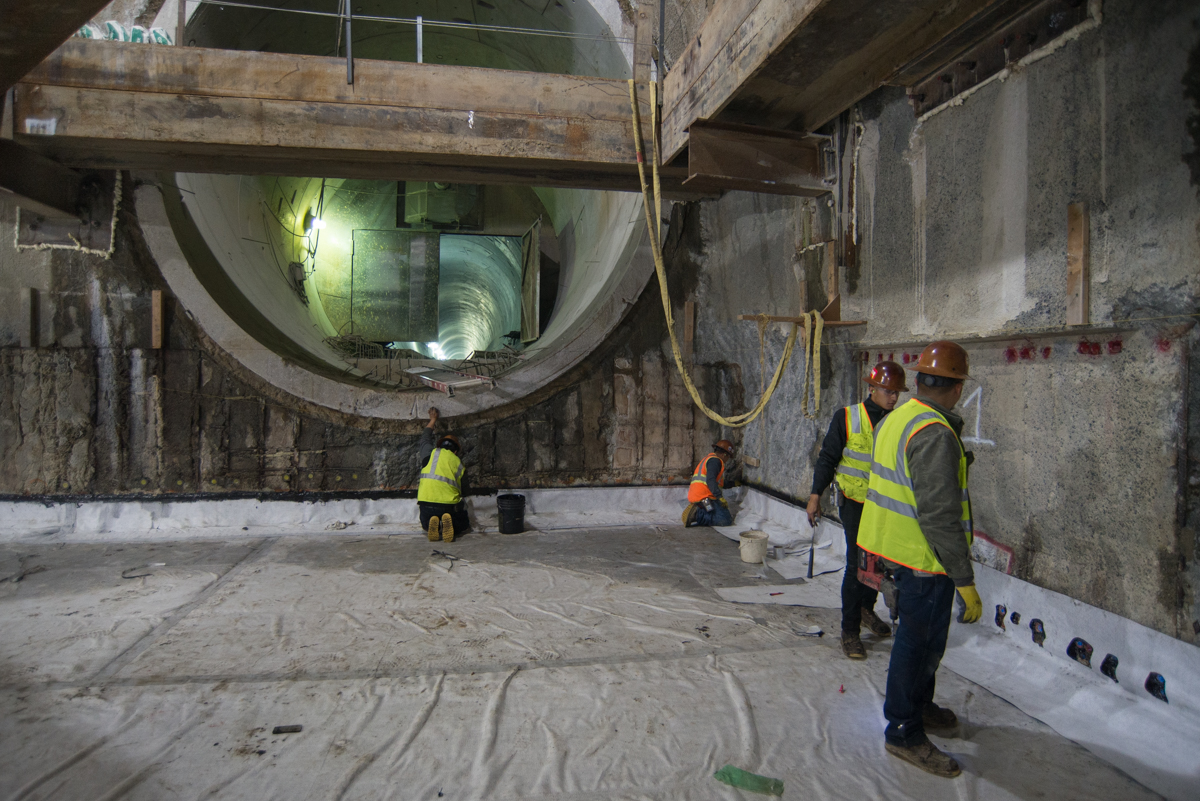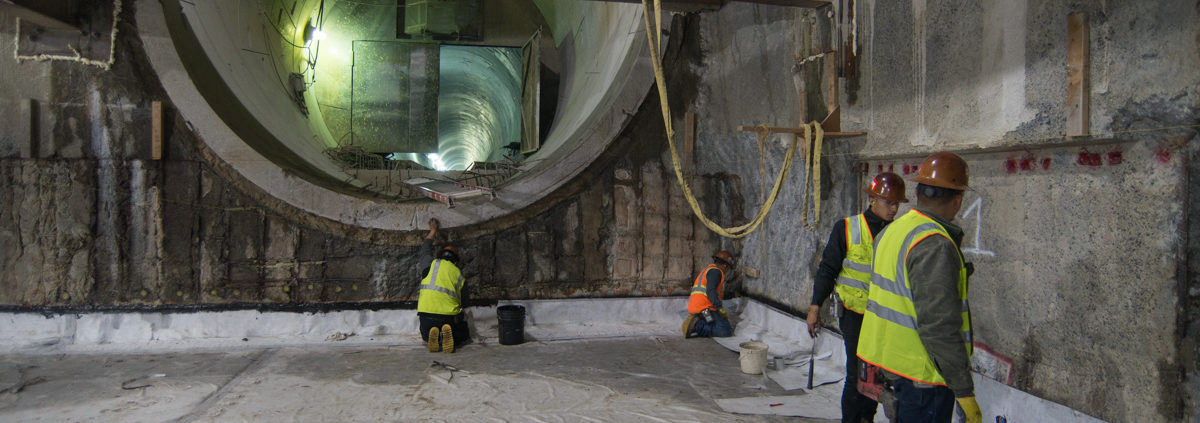An interview with a senior scheduler on a complex linear project in the USA
An interview with a senior scheduler on a complex linear project in the USA:
Jared Taylor has been a project scheduler since 2004 and has 11 years of experience working on linear infrastructure projects.
He’s spent his career with leading infrastructure companies such as Henkels and McCoy, HDR, Enbridge and consultations with Worley Parsons.
Currently, Jared is a Senior Scheduler with Tutor Perini, one of the largest general contractors in the Unites States. At Tutor Perini, Jared is working on the Central Subway Project in San Francisco. Valued at just under a billion dollars, the Central Subway Project is considered a very complex linear project, due to the factors present in a dense urban environment.
Tutor Perini is contracted to lay 1.6 miles of track and build underground stations at Chinatown, Union Market Square and the Moscone Centre.

Workers install waterproofing at the northeast corner of the station box, sealing the edges with tar before installing rebar for the invert slab. Image Copyright SFMTA https://www.sfmta.com/projects-planning/projects/central-subway-project
Question: Jared, what challenges do you find are unique to linear projects?
Jared: “Linear projects are unique in that you typically do not have full control of the project site with outside limitations of operation, whereas, in other projects like building construction, you typically have full control over the site. Linear projects create the need to work in multiple work places and optimize your resources for a smooth work flow.”
Question: Can you give us an example of the limitations that may occur with a linear infrastructure project?
Jared: “Sure, I was on a highway project where we had started construction and yet, there were still parcels of land in the right of way that had to be acquired and transferred over to the Department of Transportation.
There were a lot of moving parts and a lot of key information from scheduling, the real estate department, stakeholders and project managers that dictated how the project was going to be constructed.”
Q: What software tools have you used to manage linear project schedules?
Jared: “Outside of TILOS linear planning software, I’ve used Primavera P6 as well as MS project.”
Q: How did you find using these traditional project management software applications to manage the schedule of a linear project?
Jared “Both P6 and MS Project do not have a linear scheduling report capability so you’re unable to visualize the project with page after page of activities in a Gantt Chart format.
Q: When did you start using TILOS to manage the scheduling for linear projects?
Jared: “I’ve been using TILOS scheduling software since 2010.”
Q: What do you think of TILOS?
“I love the tool.
I really love how TILOS software conveys a lot of information and specific schedule on single page. I really love using TILOS because it is very visual. I am a visual learner myself.
A conventional way to display the schedule, using pages of gantt charts, can be very disorienting.
TILOS is extremely customizable and can convey a lot of information: graphics, histograms, cost allocations, manpower, loading, and resource allocation to name a few.
It’s powerful to be able to show complicated things in a graphical format, where it doesn’t require a lot of page turning. I think that speaks very well to management and decision makers for a well run project.”
Q: What percentage of time and money would you estimate TILOS saves, per project?
Jared laughs “I seem to specialize in projects that are behind schedule that need and a rescue. I’m known in the industry as a project recovery specialist. I’ve been able to take projects that were well behind schedule and using TILOS, bring them back to meet the contracted end date.
I’ve worked on projects where delivering the project one day behind the Contract date costs $40,000 a day, and if you’re 6 months behind schedule, it could be hundreds of thousands if not millions in liquidated damages.
The ability to get the project back on course it could save millions of dollars.”
Q: What would you tell anyone who is considering using TILOS, but hasn’t quite decided yet?
Jared: “I would tell them, if you’re doing linear projects, TILOS is well worth your investment.
The potential savings to your company and the ability to best communicate to your staff and project team makes using TILOS software a very worthy investment.”
Q: What are your Favourite Features of TILOS?:
Jared: “Incorporating graphics, whether it be LANDSAT images or elevation profiles, resources and equipment into the schedule as well.”
About TILOS linear project planning software:
TILOS is the globe’s preferred linear project management software, trusted by 4 out of 5 industry leaders.
TILOS automates the linear scheduling method, and with it, many of the repetitive tasks associated with planning, updating and presenting a linear project. It’s intuitive visual interface connect the plan to the physical project, making it easy to optimize, update and present to various stakeholders.



